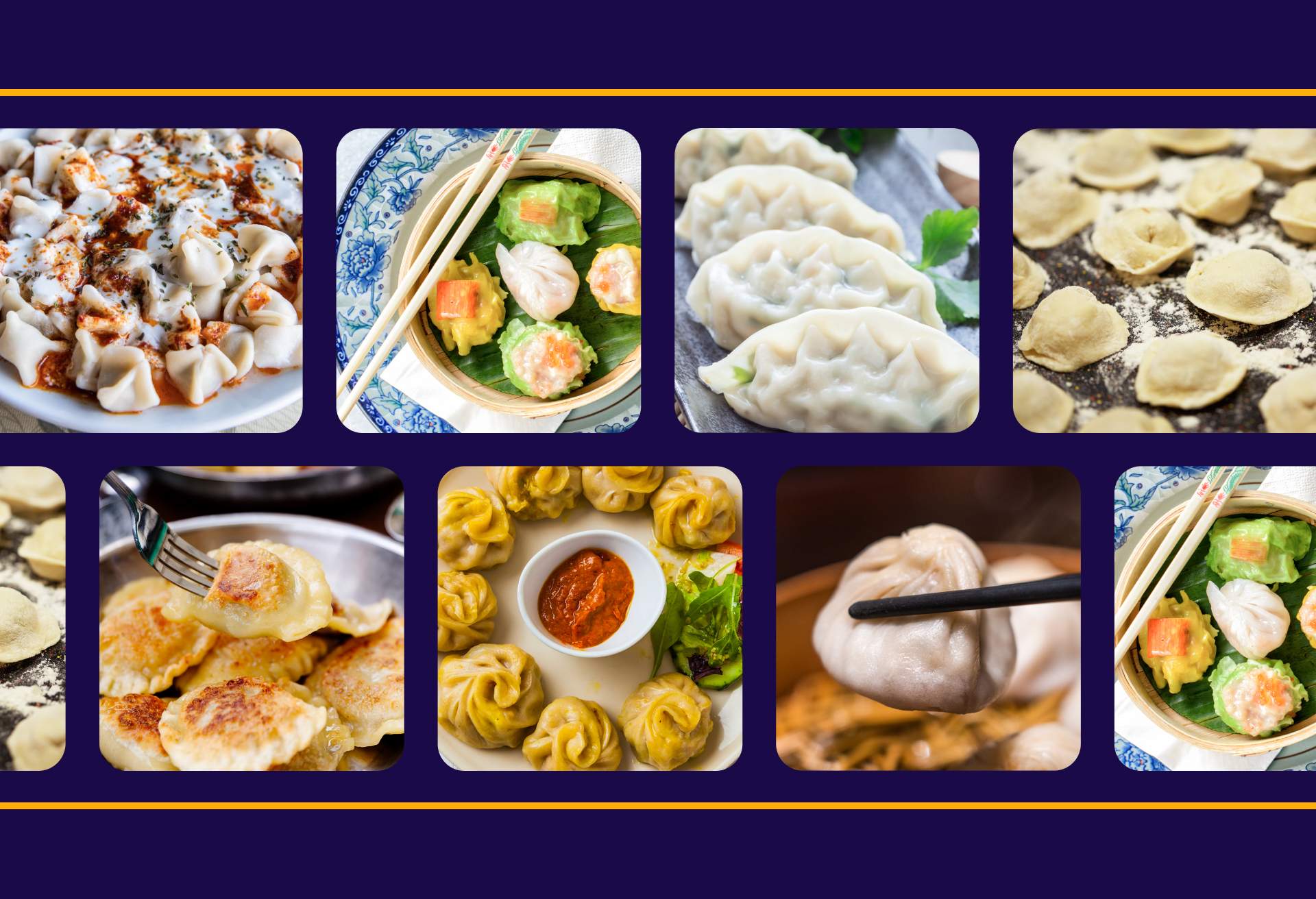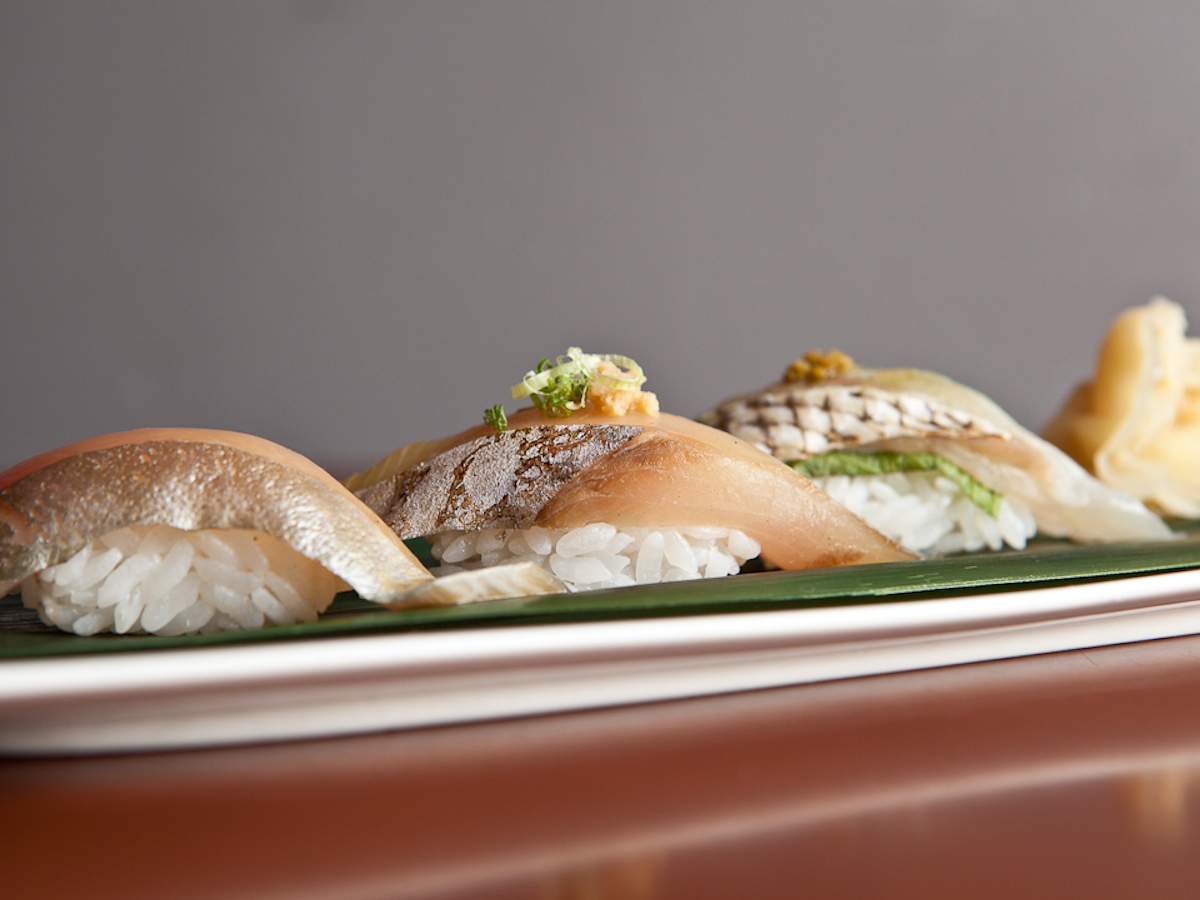Beefy, crispy, or explosive—and always with a surprise element that defines them— dumplings are the gift that keeps on giving.
For starters, they’re as much a delicious little snack as they are a work of art: dressed with spiral knots or cross tops, slumped on their side with pleats fanning out, or with rivulets flowing down like water. And let’s consider their infinite seasonings: fillings like juicy pork, soft mashed potato, or succulent chicken that get dipped in soy sauce; pepped up with caramelized onions Polish-style; spiced with cumin and cardamom in Nepalese fashion; or smothered with garlicky yogurt in the Middle East.
Where dumplings are concerned, opposites can be true: they bob in rich, steaming beef soups, and inversely, they are filled with unctuous broths that’ll have you feeling like you gobbled up a compact bowl of soup.
Though dumplings are said to have originated in China, they’ve since tumbled through centuries and across terrains—often firing up heated debates on their origin— to land at restaurants across the world. In the U.S., immigrant entrepreneurs have been at the forefront of popularizing a host of dumplings based on beloved family recipes.
Here are six types of dumplings—defined here as stuffed pockets that are primarily steamed—what to know about them, and where to find them across the U.S.

Turkic and Mongol nomads reportedly helped spread the irresistible manti from Central Asia to the South Caucasus, Muslim China, post-Soviet states, and Russia, where each culture has put its own spin on them. What’s held steadfast is a filling of chopped lamb or beef, typically spiced with coriander and cumin, with loads of onions for juiciness. Turkish and Afghan versions are pinched into a cross on top and drizzled with garlic yogurt and tomato sauce. Armenian iterations are open boat-like creations baked in an oven. Uzbek and Uyghur renditions, whose fillings may also include potato or pumpkin, are served on their own, each with their own style of folds: pleats all along the top, or with the two adjacent corners of a cross-top folded into each other to create a pattern.
Where to try: Samarkand Steak House in Feasterville-Trevose, PA, Byblos Miami in Miami, and Amare at Walt Disney World Swan Reserve in Orlando.

Chinese soup dumplings are pure delight, whether it’s the hot elixir of pork broth inside or the paper-thin wrapper that encases it.
To make them, soup dumpling maestros chill a collagen-heavy broth to congeal, then add slivers of it to the ground meat filling in the center of a wrapper. They pleat upwards and clockwise until they’ve gone through the perimeter (the more pleats, the more skilled the maker), then cinch and twist them at the top. This way, the only potential leakage point is at the top. The dumplings are then steamed in a xiaolong, or steaming basket.
Eating them also requires finesse. Dip into black vinegar with strands of ginger, take a bite out of the side and let the hot soup dribble onto a spoon. Or bite off the knot on top, drop some vinegar-ginger mix inside, give it a few seconds to cool, and pop the whole thing in your mouth to release the most spectacular explosion of liquid and solid, savory and sour.
Where to try: Lao Sze Chuan in Chicago, Capital Seafood Restaurant in Los Angeles, and Fortune House Chinese Cuisine in Irving, TX.

In the classic Korean mandu, a thin wrapper encases a multifaceted filling of ground pork, crumbled tofu, sweet potato glass noodles, chives, and garlic (kimchi, cabbage, and mung bean sprouts also make up other iterations). It traditionally comes with a soy sauce and vinegar dipping sauce seasoned with some combination of sesame oil, toasted sesame seeds, scallions, and gochugaru. The dough, or pi, is typically made with wheat flour, salt, and water and rolled out into discs about three-and-half inches wide. Once stuffed, seams are pinched shut into half moons or taken a step further with the two tips pressed into each other to create a little bundle that looks like it’s hugging itself. They’re steamed, pan-fried, or at its most comforting and complex iteration, served in a hefty and hearty bowl of steaming beef stock-based soup called manduguk.
Where to try: Mandu K Street in Washington, DC, Palace Korean BBQ in Seattle, and Hanbat in New York City.

Italian tortellini are small stuffed rings with a corner of its square wrapper sticking up like a pope’s hat. The tortellini dough is a well-kneaded amalgam of eggs and flour that get flattened and cut into approximately one-and-half-inch-long squares. The first-ever recipe on record from 17th century Emilia-Romagna, Italy, calls for tortellini filled with pork loin, prosciutto, mortadella, parmesan cheese, and nutmeg, all served in a broth made from capon, a castrated male chicken that’s fed a rich diet. It’s picked up new treatments since: with fresh milk cream ladled over it; with fillings like ricotta, spinach, or shrimp; and added to dishes like zesty salads as well as to hot plates featuring pesto, tomato, or alfredo sauces.
Where to try: Artu in Boston, Ristorante Bartolotta dal 1993 in Milwaukee, and Campania Milton in Milton, GA.

The perfect bite of doughy pierogi has a dollop of sour cream, tender browned onions, and salty bacon bits. Pierogies are the national dish of Poland, where the filling has evolved from veal kidney in 1682 to a medley of mashed potato, sautéed onions, farmer’s cheese, sauerkraut, cabbage, mushrooms, spinach, and ground beef. Dessert versions also abound with fresh cherry or plum fillings. The seams are sealed or crimped along one side of the pierogies, which head first into a pot of boiling water before they are pan fried for a savory, browned surface. The Ukrainian version of these dumplings are called vareniki.
Where to try: Marcus Bar & Grill in Shelby Township, MI, Butterjoint in Pittsburgh, PA, and Mika’s Pierogi Kitchen in Colorado Springs, CO.

From the filling to the accompanying sauce, momos amp up the spices. Nepalese chefs season the stuffing, usually a base of chicken or vegetables (though it was historically made with buffalo), with spices like red chile powder, cumin, and cardamom and keep the spicy theme going with achar, a South Asian condiment. The one served with some momos is usually tomato based and comes with green chiles, garlic, and even more red chile powder. Momos have a smattering of folding techniques: a round swirled top or curved with large crimps on top. The jhol momo comprises steamed momos in a broth of chiles and tomatoes.
Where to try: Namaste India in Denver, Namastey Patio in Oakland, CA, and Himalayan Heritage Restaurant & Bar in Washington, DC.
Caroline Shin is a Queens, NYC-bred food journalist and founder of the Cooking with Granny YouTube and event series spotlighting immigrant grandmothers. Follow her on Instagram.



